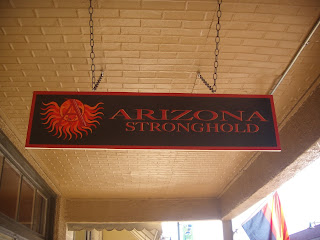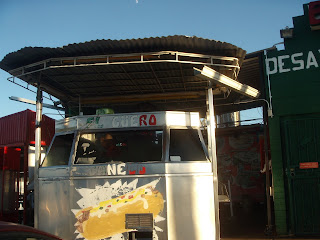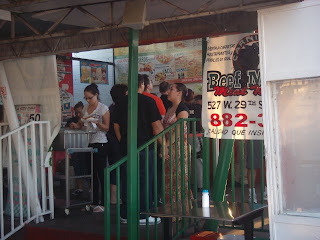I love Autumn -- its harvest festivals and foliage in hues of red and gold. In Arizona, a great place to enjoy both is the
Verde Valley Canyon Road, which celebrates the fall season with its Ales on Rails Oktoberfest.
My friend Tory and I hit the road and headed north to beat the heat in Phoenix. While the calendar says its fall, the thermometer does not agree -- still recording temps in the 90s. In the Verde Valley, however, fall has arrived. A short 2-hour drive up Interstate 17 and the temperature dropped 20 degrees. A welcome relief.

We arrived at the station early to enjoy the Oktober-festivities before our train ride. All the Deutschland favorites were well-represented. Loud German music was playing in the courtyard and we feasted on brats, sauerkraut, potato salad and beer -- plenty of beer, 12 different kinds. There were local brews from Oak Creek Brewing Company, German brands, like Spaten, and many others from around the U.S. -- New Belgian from Ft. Collins, Colo., Big Sky from Missoula, Mont. and Sam Adams from Boston, Mass., to name a few.
Tory and I each received five tastes, which was more than enough, along with our commemorative Verde Canyon Railroad beer glass. While several of my favorites beers were among the mix, I tried some new ones. The most unusual and most surprising was Alien Amber Ale from Roswell, N.M. I initially thought it was a novelty brew and would taste horrible, but if fact it was quite good. But my favorite overall was New Belgian's Hoptober Golden Ale with its creamy, medium-bodied flavor, similar to brewery's famous Fat Tire label.
After tasting a few more beers, it was time for Tory and I to board the train. We were in the first class cabin, which in my opinion is the only way to go. There you enjoy a Champagne toast upon boarding and spacious accommodations, including big, comfortable seats, a complementary snack buffet and an attentive staff that is more than happy to point out the sights along the way.

There is no shortage of breathtaking scenery along the 40-mile round trip wilderness ride from the Clarkdale station to the Perkinsville Junction. The train snaked along the Verde River and through the Verde Canyon, which is mostly inaccessible except by foot, kayak or a four-wheel drive vehicle. Whether inside the comfortable rail car or outside on the open-air gondola, we got a spectacular view of nature. Gold, bronze and copper leaves waved as the train passed by, eagles soared high above the canyon wall and exquisite rock formations towered over the tracks





At Perkinsville -- although there is still another 18 miles of track ahead -- the train comes to a stop and the engine slides along the right-hand side and hooks up with the other end of the train for the ride back to Clarkdale. The return trip provides the same sights and a chance to spot anything you missed on the first half of the journey.
They say no matter how many times you travel the Verde Canyon Railroad, no two trips are alike. I think that's true. The canyon's hidden wonders and the changing seasons will make every trip exciting and new.


























































